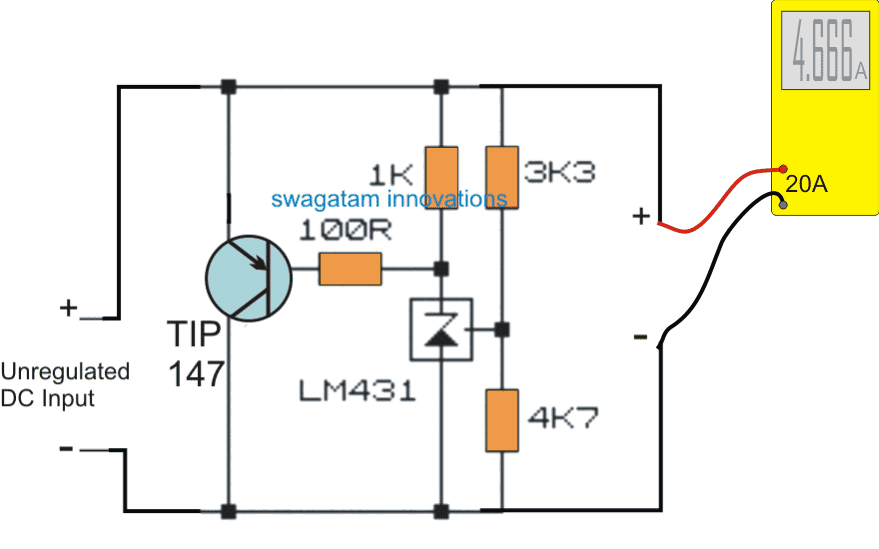In this post I have explained a method of checking or verifying alternator maximum current delivering capacity using a shunt regulator as the dummy load and an ammeter. The idea was inquired by Mr. Joe.
Circuit Question
I need help designing an electronic dummy load that can handle high enough power from motorcycle alternator.
I need to know how much power is available from the alternator because when I first time finished rewound the alternator, it shows me 7A of power from two winding set (my alternator is modified by adding another winding on outer layer of existing winding).
But now it only shows about 4A of power from the two winding set. Is it best to use electronic dummy load or just simple resistive load as resistive load is only work in certain voltage range (that's what I know) to test the alternator.
Kindly need your help for the circuit design.
Thanks and regards,
Joe
Assessing the The Design
Hi Joe,
did you try using your digital mulltimeter with a shunt regulator.
You can set the meter to the maximum current range, normally this could be at 20Amp AC range and check the results by connecting its prods at the output of the shunt regulator and input of the shunt with the alternator winding output. This should provide you with the necessary information??
The Design
I have already discussed a simple shunt regulator circuit in one of my earlier posts, we can implement the same shunt regulator circuit as a dummy load for the proposed testing of alternator current, through an ammeter in series with the shunt device.
Although an ammeter can be directly connected with the alternator output for measuring its current capacity, a shunt regulator ensures a controlled measurement of the measurement over a specified voltage limit.
Meaning if the alternator is rated to generate a fluctuating voltage say from12V to 24v, the shunt regulator could be set to dump the excess voltage above 12V and control the alternator voltage at this level.
However for the meter this might have no notable effect except a little stress-free working due to the controlled voltage level.
The following circuit shows how to use a shunt regulator as a dummy load with a ammeter for testing alternator current safely and accurately.
Circuit Diagram

thanks Swagatam understaning much more about avr just cycling around to understant avrs better …no need to reply answer some ones question THANKS